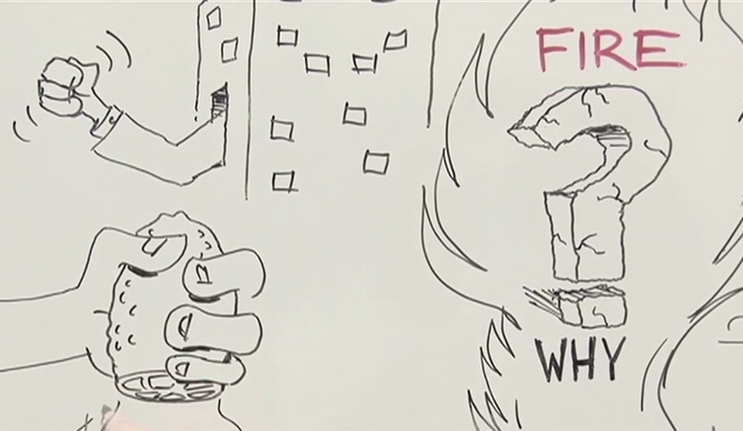
RESEARCH NEWS
A picture is worth a thousand words if you want to change the world
If you want to get your message across, be an agent for organisational change, or be elected to public office, then finding a story that resonates with your audience is crucial.
“A lot of people think that we communicate through facts but if we really want to persuade people, we need to tell a good story,” says Dr Richard Badham, Professor in Management at MGSM. “That goes for whether you are a CEO leading an organisation through a period of transformational change or a politician battling for election.
“People always respond to stories with heroes and villains,” he says. “Who we think we are is the result of stories, those that we hear and those that we tell ourselves.”
Professor Badham works in strategy and organisational behaviour, and studies the dynamics and leadership of organisational change. His research explores how greater openness, reflexivity and irony assists individuals and organisations to cope creatively with the dilemmas and pressures of life in complex and dynamic environments.
In recent years he has been involved in developing a new model of organisational transformation, and with Professor Peter Fuda undertook an in-depth study of prominent CEOs who had successfully transformed themselves, their leadership teams and their organisations.
“We asked them what actions they took that led to their success and what held them back. While they saw themselves as heroes fighting against particular issues, they also came to realise their own weaknesses, their fears of looking foolish or being ousted as an imposter. They gained immense credibility when they shared this with others.”
Fighting for a cause
When you look at history, the success or failure of leaders is often outside their influence, Professor Badham continues. “They are like drivers of skidding automobiles, with heavy responsibilities but little control. “Their stories give them the impetus to keep on going.”
“In Australia, an important story we tell ourselves is that of the underdog knocking off those on top. It’s motivated many leaders to battle on in the face of opposition.
“After all, why would they bother to struggle if they didn’t see themselves as heroes fighting for a cause?” he asks.
He says that their research has shown that leaders often tell their organisations a different version of the story than the one they tell themselves, but a degree of hypocrisy may be necessary.
“They talk about how disruption is part of the march to progress and ultimately leads to happiness and achievement,” he says, adding that research conducted on Price-Waterhouse Coopers, shows that part of their success depends on whether or not the story driving organisational change is believable.
The power of a good metaphor
Telling the right story, in the right way, he says, is key.
“It’s easy for a leader to kill off an audience by being long-winded, but using tempo, excitement, clarity and focus, supported by the use of metaphor and imagery, is very important.”
Professors Fuda and Badham turned the metaphors they found in their study into animated videos that use compelling imagery to convey their findings and share their discoveries with other leaders striving to transform their organisations.
Simple, credible imagery that recognises ambiguity and stimulates creativity is also very powerful, he says.
“The leaders we spoke to talked about the ‘snowball of accountability’ rolling down a hill and gathering momentum. Some people have seen the metaphor as being less about the snowball and more about the snow, which is controlled by external factors such as the environment. It provokes new avenues of thought and discussion.”
The ironic manager
Interestingly, Professor Badham’s current research is showing that a new type of manager is emerging, that of the ironic manager, who knows the world is made up of the stories that we tell about themselves and others.
“The deluded fall into two camps, those who hang on to the narratives they’re given wholeheartedly and believe they are on a march into a wonderful future, and those who see the stories as merely a smokescreen for what is really going on.
“Then there are those who go beyond this. They are like a tightrope walker, leading by giving hope and certainty, yet also acknowledging that the world is messy and ambiguous.
“It’s a good way to be: as soon as you accept the storied nature of it all, you are better able to cope with complexity.”